Sri Lanka: From Mine to Market, Part 2
September 30, 2014
22K Gold Jewelry
As with gemstone cutting, jewelry manufacturing methods in Sri Lanka range from traditional to modern. We visited small workshops that were mainly involved in hand fabrication of 22K gold jewelry. Jewelers sat on the floor and created pieces by hand sawing, bending with pliers, soldering with handheld gas torches or even blowpipes, and hammering. Often they worked shirtless due to the daytime heat combined with the heat from the torches.
This was in contrast to the modern factories we visited, where jewelers worked at modern benches with a greater variety of hand tools and also used wax carving, mold making, and casting. Their designs were created with CAD/CAM. The mass-production capacity and consistent weight of these pieces gives the modern factories an advantage in keeping costs down for the popular 22K gold jewelry market. They also had greater capacity to produce other karat-gold alloys, as well as white gold and platinum, and to create more contemporary designs.
Retail
A good portion of the Sri Lankan retail market is tied to 22K gold jewelry for weddings and special occasions, investment, and the pawn industry. It's the traditional choice for brides, and virtually no wedding in Sri Lanka happens without it. Heavier jewelry pieces are preferred because most of their value lies in the gold commodity value, which can be regained when the jewelry is sold or, more likely, pawned.Another important aspect of the Sri Lankan retail industry is the use of 22K gold jewelry as an investment. The pawn business is tied directly to the jewelry industry. Sri Lankans place a percentage of their personal wealth in 22K gold jewelry, to be pawned in times of cash shortage. They have traditionally used crystal and cubic zirconia to add sparkle and color to their jewelry, since nearly all of the loan value comes from the intrinsic value of the gold. Even major banks there have substantial portions of their portfolios invested in the pawning of gold jewelry.
Colombo
After an early-morning arrival in Colombo, we visited the offices of Sapphire Capital Group, where we saw Sri Lankan dealers acting as agents and consultants for a foreign buyer. Numerous local dealers brought in their stones and offered them for sale. Sapphire Capital Group guarantees the material to be as represented.“I do not have inventory that sits around," Mr. Rehan said. "My inventory is not like the standard commercial material on the market, and it goes quickly to a growing niche market.”
After touring the surrounding mining areas, we returned to Colombo to document 22K gold jewelry manufacturing at Sujitha Traditional Jewellery Workshop on Sea Street. We also visited leading retailers Wellawatta Nithyakalyani Jewellery and Devi Jewellers, where we interviewed each company's director. We also interviewed other industry leaders and visited Wellawatta Nithyakalyani’s modern jewelry manufacturing facility. At the Wellawatta retail store, we were able to photograph a Sri Lankan model wearing jewelry in a variety of traditional and modern styles.
Beruwala
The gem trading area of Beruwala is also known as China Fort, named after Chinese traders who settled there about 300 years ago. We visited the morning gem market, which actually lasted through mid-afternoon. The market was very busy, with dealers crowding the street over a two-block area. We were told that up to 5,000 dealers might be in the street and offices at any one time. This open market is not associated with any particular mining area but has material from the various mining areas of Sri Lanka.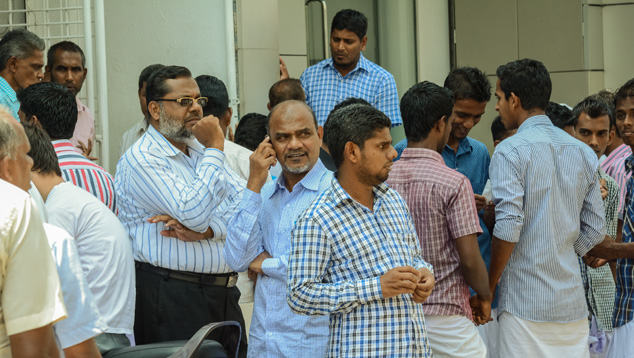
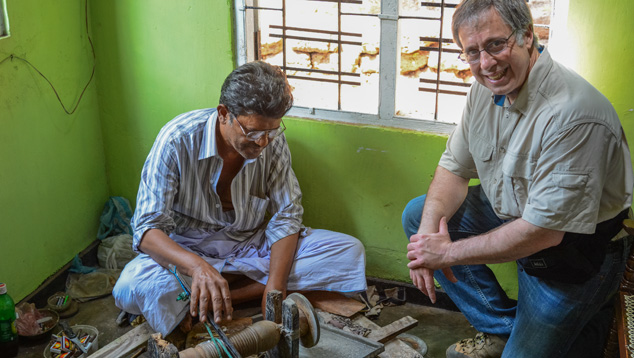
Ratnapura
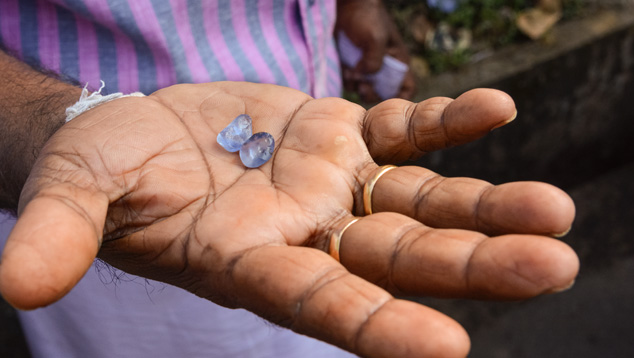
After leaving town, it was easy to find small-scale traditional pit-mining operations in the area around Ratnapura. All of the mines we visited were pit-mining operations that used traditional methods of digging the gravels and tossing up the buckets or hoisting them with a hand-powered winch.
Balangoda
Balangoda was especially valuable for documenting the Sri Lankan mining industry. In one day, we were able to visit traditional pit mines, mechanized mines, and river mines and interview experts involved with each process. We also had the opportunity to see a couple of processing operations that used sluices based on Australian designs.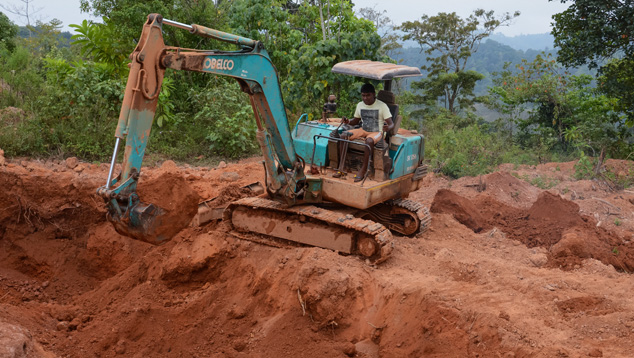
We also visited a pit mine that used only manual labor, located right next to a mechanized operation. Both were in full production. Later, we went to a traditional pit-mining operation where the rainwater had just been pumped out and they were starting to remove the illam. At one of the mechanized open-pit operations, they also washed the overburden, as both the overburden and the illam were fairly rich in gemstones.
The highlight of the Balangoda mining area was a visit to a river mining operation right next to a picturesque tea plantation. Seven miners worked the deposit. They had chosen an area where the water slowed and built a dam to help trap the gravels. They scooped out the overburden gravel until they reached the illam, which they loosened with long pointed steel rods. They dragged up the gem-bearing gravel so it could be washed by the rushing water and removed any visible gemstones. The remaining gravel was set aside for possible further washing. Besides sapphires and other gemstones, these miners were also finding gold.
At Balangoda, we were able to document all forms of traditional and modern mechanized mining conducted in Sri Lanka: digging in open pits and traditional pit shafts, the use of excavators and trucks to remove overburden and gem gravels in open-pit mechanized mines, mechanical sluices, hand-washing gravel and traditional river mining.
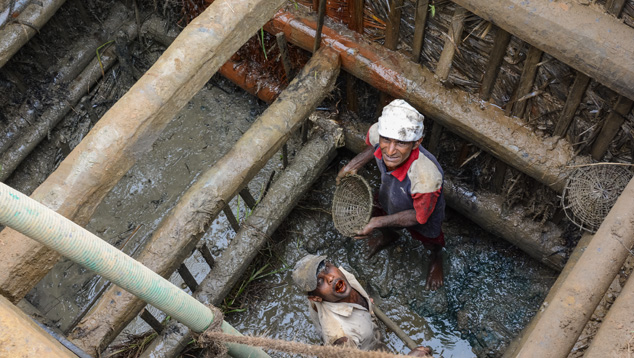
Elahera
The last famous Sri Lankan mining area we visited was Elahera, where we saw mechanized and traditional pit mining. One of these mechanized operations also had a problem with the water supply becoming too muddy for their sluice, so they were trucking gravel to another washing area. There we watched gem gravels being washed and the sluice being opened up to examine the yield.The next stop in Elahera was an open-pit operation using traditional mining methods. A worker at the bottom of the pit removed overburden and gravel with a scraper and placed it in a basket held by another miner. With almost perfect coordination, the basket filled with mud and gravel was tossed up to a chain of three miners, each one a bit higher up, until the basket was emptied and placed in a pile at the top of the pit. As the mud- and gravel-filled basket was tossed to the top, an empty basket was thrown back to the bottom of the pit in what looked like a professional juggling act.
One of the surprising aspects of Sri Lanka is that you come across traditional pit mines just driving down the roads. The mine where we witnessed the acrobatic tossing of baskets was alongside a paved road, as was another shallow pit operation we found by accident right in front of a home and farm. At this shallow pit operation, the overburden was removed quickly and they were just starting to reach the illam and dig horizontally from the pit to remove the gem-bearing gravels. This was a traditional mining operation: All the work was done with hand tools and the gravel was removed in baskets on the miners’ shoulders.
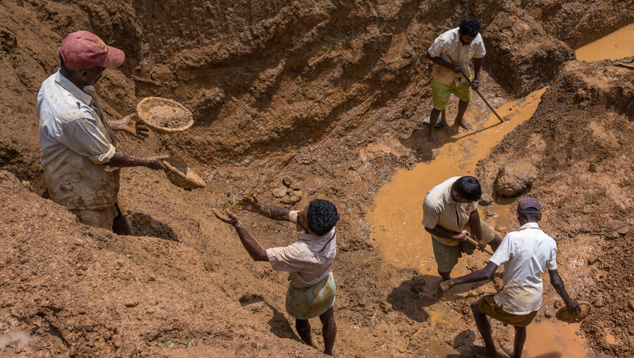
Summary
After extensive observations and interviews covering all sectors of the Sri Lankan gem and jewelry industry, we were able to obtain a clear picture of this dynamic market. While Sri Lanka struggled to regain its status in the global market from the 1970s through the 1990s, the last decade has been very encouraging. With more trade-friendly policies, they have become competitive in the global market for rough sapphire and other colored gemstones from around the world. Domestic mining activity has increased with renewed interest and higher prices sparked by China and other new markets.The Sri Lankan industry combines traditional cutting experience with modern skills to suit all market sectors, and its trading models incorporate decades of relationships and experience into strategies for today's markets. Jewelry manufacturing, though focused primarily on 22K gold jewelry for the domestic market, is moving to different styles to suit new consumers. The Sri Lankan retail industry hopes to continue the traditionally strong 22K gold jewelry business for weddings, special occasions, and investment as it cultivates the newer generations’ taste for gemstone, karat gold, and platinum jewelry, as well as diamond and colored gemstone jewelry. All in all, this is an industry that honors tradition while also showing strong potential for future growth.
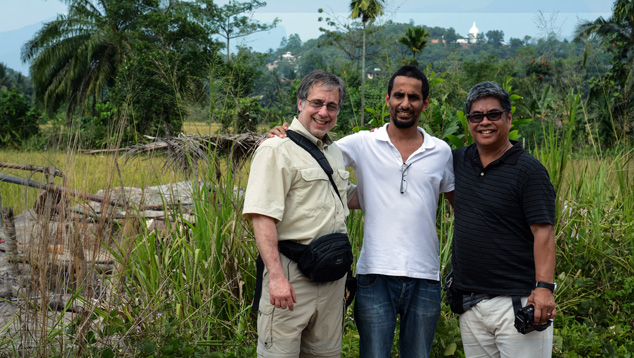
More to Come
These field reports will be followed by a more in-depth Gems & Gemology article with further reporting on our findings from the Sri Lanka expedition. We will also continue working closely with the Sri Lankan industry to provide updates on this dynamic industry and its importance to the global markets.Andrew Lucas is manager of field gemology at GIA in Carlsbad, California. Armil Sammoon is a member of the board of directors of the National Gem and Jewellery Authority, the chairman of the Sapphire Capital Group, and a chairman of the Sri Lanka Gem and Jewellery Association. A.P. Jayarajah is CEO of Wellawatta Nithyakalyani Jewellery and chairman of the Sri Lanka Gem and Jewellery Association. Tao Hsu is technical editor of Gems & Gemology and Pedro Padua is a video producer, both at GIA in Carlsbad.
DISCLAIMER
GIA staff often visit mines, manufacturers, retailers and others in the gem and jewelry industry for research purposes and to gain insight into the marketplace. GIA appreciates the access and information provided during these visits. These visits and any resulting articles or publications should not be taken or used as an endorsement.
The authors would like to thank the following individuals and groups for making this expedition possible and for helping us obtain the knowledge we can now share. The GIA team especially thanks the Sri Lankan authors, all the members and organizations of the Sri Lankan gem and jewelry industry, and the extremely warm, hospitable people of Sri Lanka. Also, author Andrew Lucas would like to thank videographer and coauthor Pedro Padua for his tireless hard work in the field, taking readers to these locations and revealing the stunning visuals.
Shamil Sammoon
Faiq Rehan, managing director of Precision Lapidaries
Sujitha Traditional Jewellery Workshop
N. Rengarajan, proprietor of Ravi Jewellers
V. Rishanthan, director of Ravi Jewellers
J. Sasikumaran, factory manager of Wellawatta Nithyakalyani Jewellery
Y.P. Sivakumar, partner at Wellawatta Nithyakalyani Jewellery
Prof. P.G.R Dharmaratne, former chairman of the National Gem and Jewellery Authority
Ajith Siriwardena, deputy superintendent of Sri Lanka Customs
Saman K. Amarasena, owner of Swiss Cut Lapidary and a vice chairman of the Sri Lanka Gem and Jewellery Association
A.H.M. Imtizam, president of Gem Paradise
H.C.J. Bandara
N.S. Vasu of Devi Jewellers
N. Seenivasagam, chairman of Devi Jewellers Ltd.
S. Ramesh Khanth, managing director of Devi Gold Cast Pvt. Ltd.
M.S.M Fazli, Saleems Limited
Juzar Adamaly, chairman of Facets Sri Lanka
Aly Farook
Ruzwan Kamil, managing director of MSM Kamil, Exporter of Fine Gemstones
W.D. Nandasari, managing director of Sapphire Gems
Nabeel Salie FJC, The Fine Jewellery Company
Altaf Iqbal, managing director of Regal Gems Ltd.
M.T.M. Haris, Emteem Gem Laboratory
M.L.M. Sanoon, proprietor of San Gems
Roshen Weereratne, project coordinator at Facets Sri Lanka
Sri Lanka Gem and Jewellery Association
National Gem and Jewellery Authority of Sri Lanka
International Colored Gemstone Association
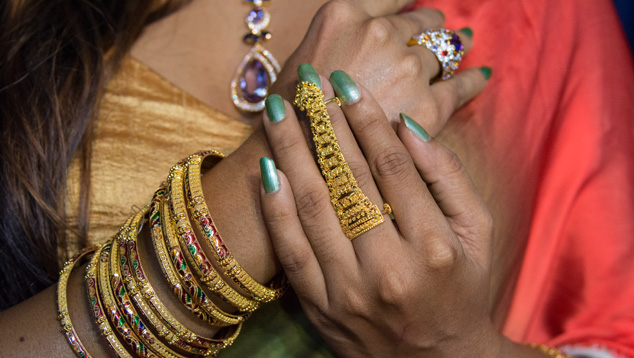

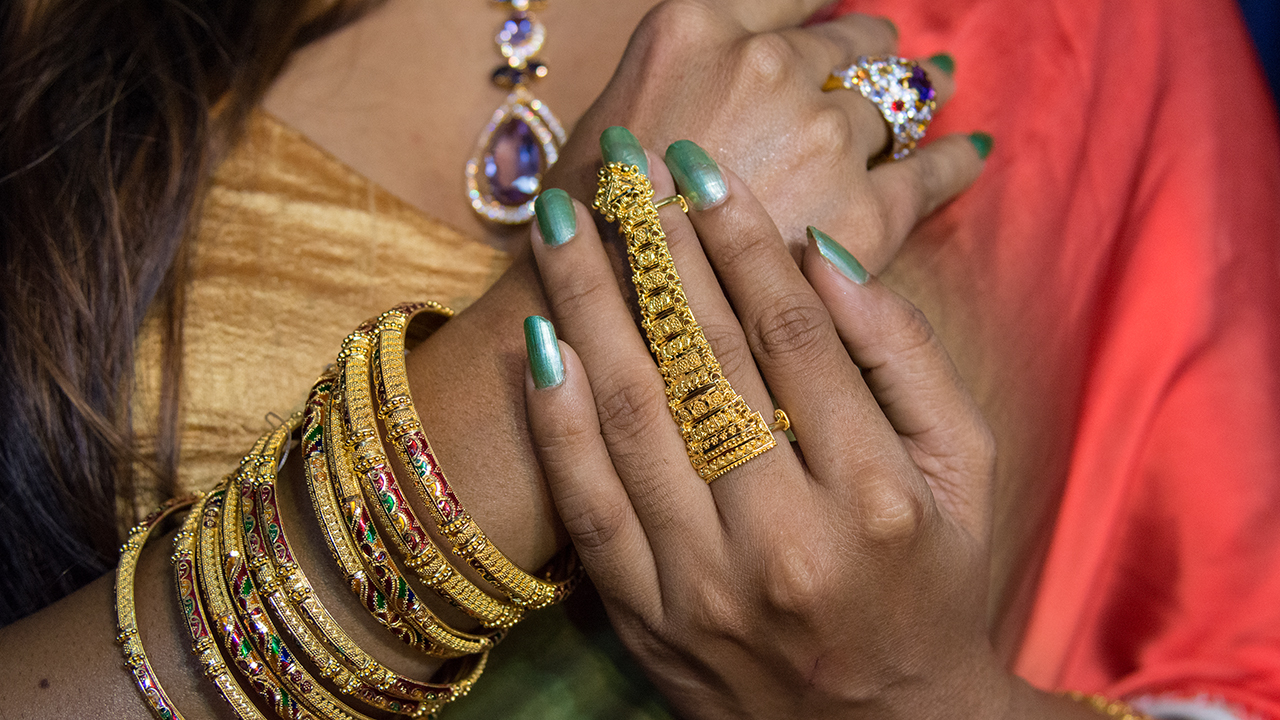







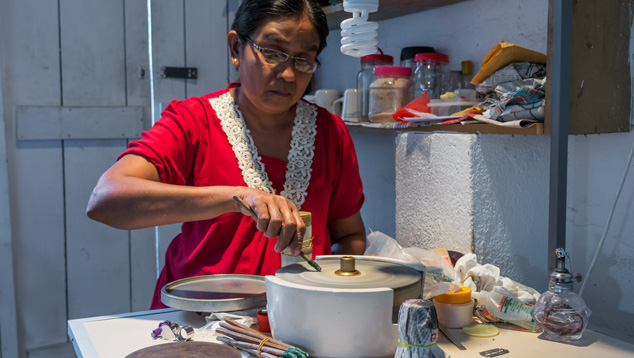




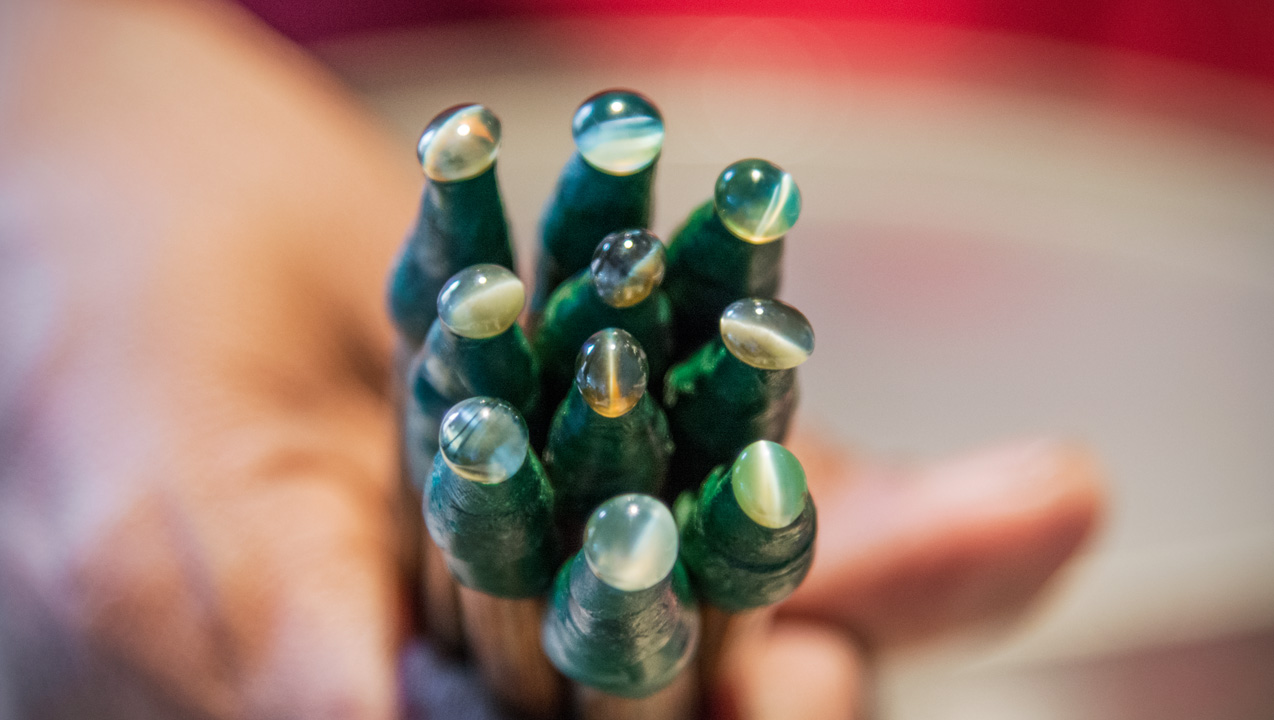

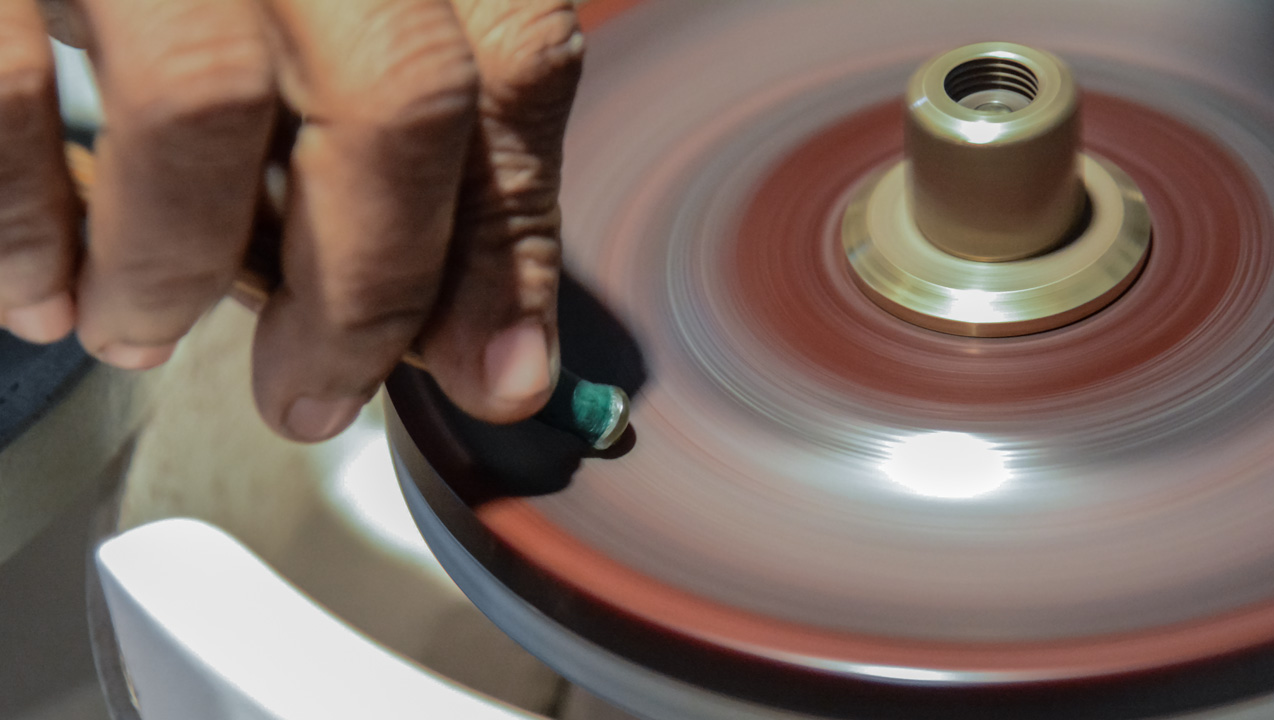
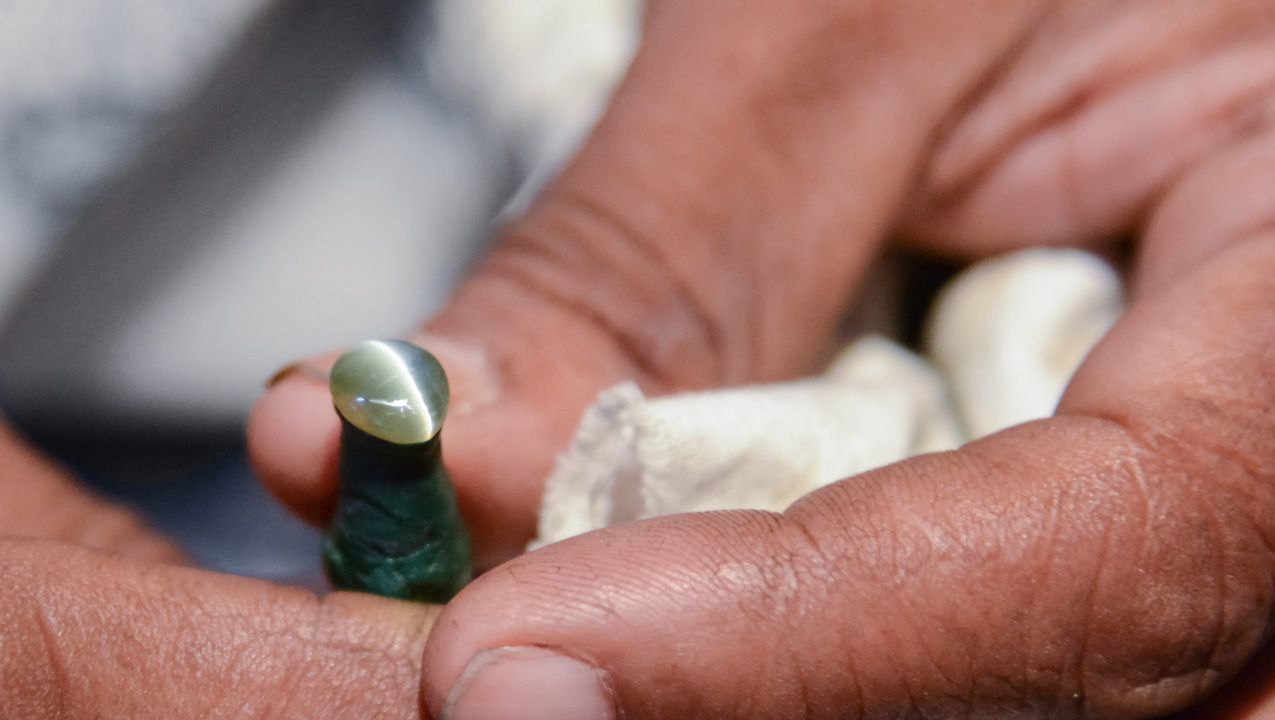




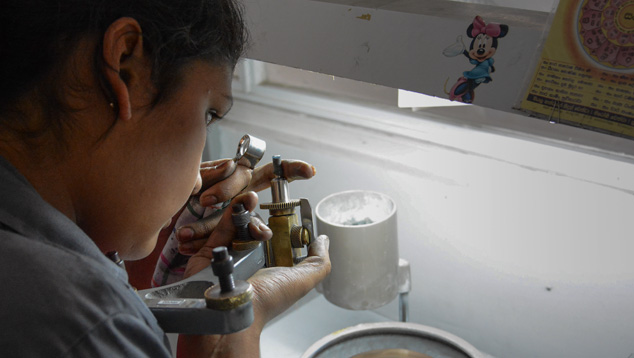
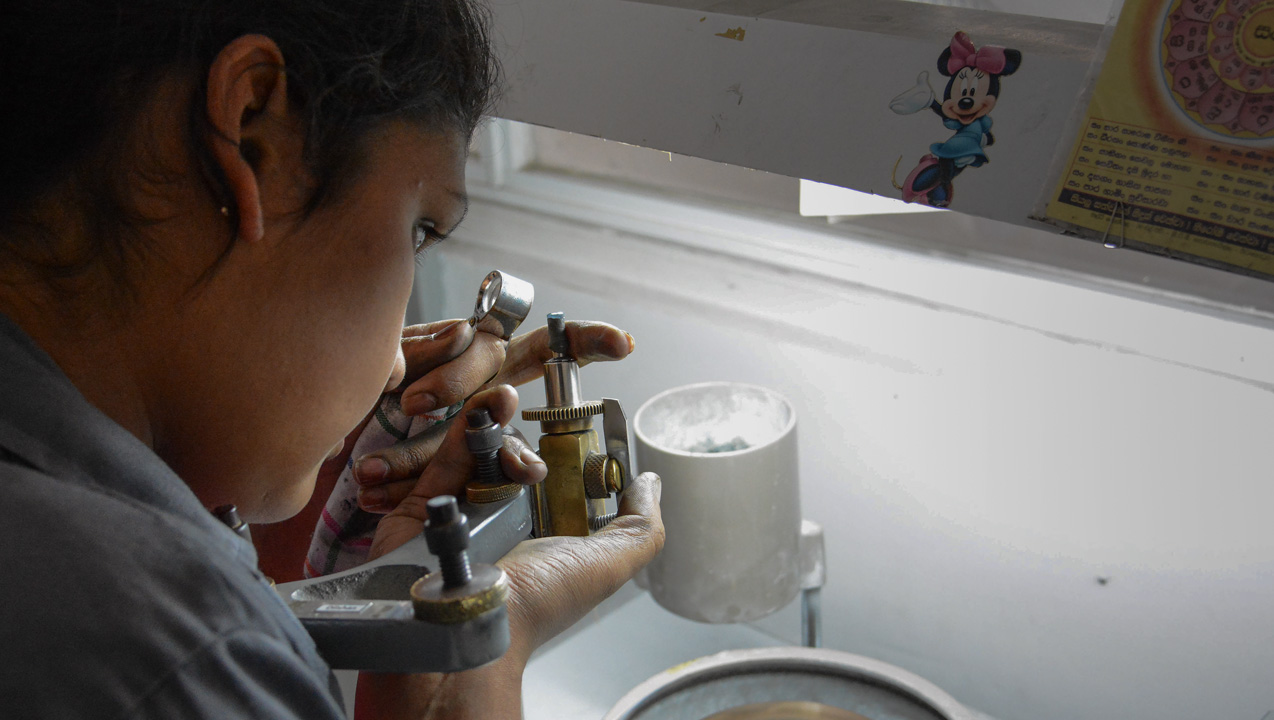





.jpg)


